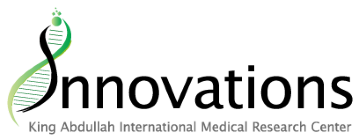
Fanconi anaemia is the most common form ofinherited bone marrow failure that requires bonemarrow transplantation therapy in Saudi Arabia.© RALF-FINN HESTOFT / CORBIS DOCUMENTARY / GETTY IMAGES
Fanconi anaemia is an inherited genetic condition of bone marrow that causes a predisposition to cancer. Researchers at King Abdullah International Medical Research Center (KAIMRC) have gained insights into the genetic basis of this condition in Saudi patients. Their work reveals distinct genetic characteristics and may improve diagnosis and treatment in the future.
Fanconi anaemia is a rare disease involving mutations in at least 18 genes. These genes encode proteins that perform essential running repairs to DNA that keep most humans healthy, despite the inevitable damage to DNA through wear and tear. With the DNA repair pathways unable to function normally, most of these patients develop cancer. They also display physical abnormalities, including short stature, and have a life expectancy of around 40 years.
Although rare, Fanconi anaemia is the most common form of inherited bone marrow failure that requires bone marrow transplantation therapy in Saudi Arabia. Paediatrician Abdulrahman Alsultan and colleagues at the King Abdullah Specialist Children’s Hospital in Riyadh, together with co-workers at other centers in Saudi Arabia, studied the genetic causes of ten unrelated cases of Fanconi anaemia. The patients were infants and children who were diagnosed with the condition between 2011 and 2015. The researchers used state-of-the-art gene sequencing technology to identify the mutations associated with the disease in these patients. They also looked for links between specific mutations and the varying clinical consequences of Fanconi anaemia among the cohort.
The results indicated that the pattern of mutations in these Saudi patients differed significantly from that found in comparable patients in Europe and North America. The researchers suggest that one consequence of these differences could be that a standard test used to diagnose some forms of Fanconi anaemia may fail to diagnose some Saudi patients. The genetic analysis also identified some new mutations to add to the list of those that can cause the disease.
One aspect of particular interest is that two patients with one specific mutation belonged to the same tribe. This may indicate what the researchers call a “founder effect or hotspot” that might be used to trace the origin of this mutation. Other mutations are presumed to be “ancient”, due to being found in members of different tribes and ethnic groups.
This was a small-scale preliminary study, based on patients at a single institution. Given the potential significance of these early results for diagnosing and understanding Fanconi anaemia, the researchers now plan a much larger multi-institutional follow-up study, again focused on Saudi Arabia.


